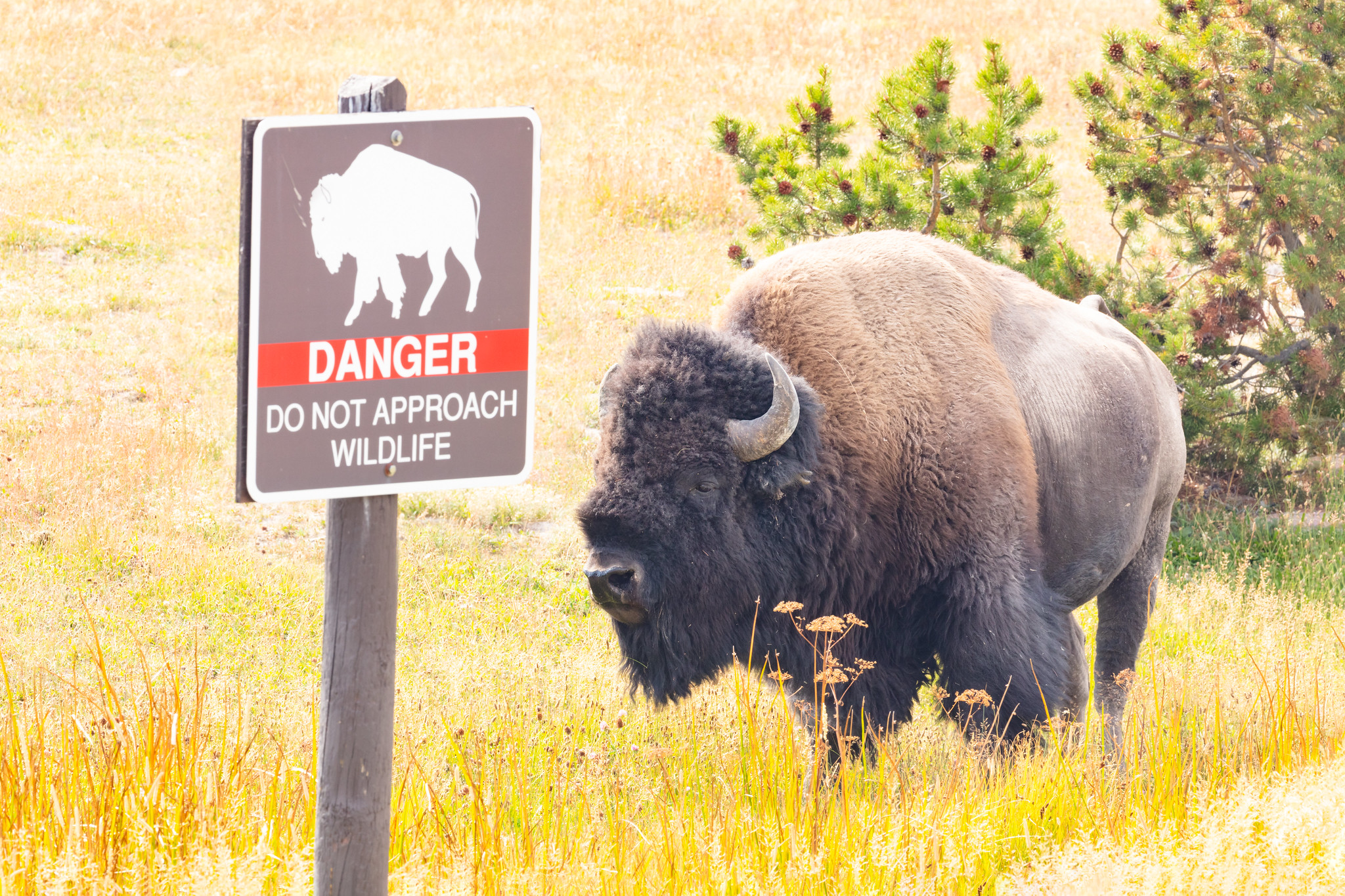
- Details
- By Native News Online Staff
A 40-year old Idaho Falls, Idaho man was arrested for kicking a bison on Yellowstone Park, the country’s largest national park.
According to a press release distributed by Yellowstone Park, Clarence Yoder approached a bison too closely (within 25 yards) on the afternoon of April 21, 2024, and was injured by the bison.
Rangers on that day received a report that an individual harassed a herd of bison and kicked a bison in the leg. They located the suspect's vehicle near the West Entrance and stopped it in the town of West Yellowstone, Montana.
Yoder was arrested and charged with 1) being under the influence of alcohol to a degree that may endanger oneself, 2) disorderly conduct as to create or maintain a hazardous condition, 3) approaching wildlife, and 4) disturbing wildlife.
Yoder sustained minor injuries during his encounter with the bison. Park rangers took Yoder to a nearby medical facility where he was medically evaluated, treated and released from medical care. He then was transported to the Gallatin County Detention Center.
The driver of the vehicle that Yoder traveled in was also arrested. McKenna Bass, 37, also of Idaho Falls, Idaho, was also arrested and cited for 1) driving under the influence, 2) interference for failure to yield to emergency light activation, and 3) disturbing wildlife.
Yoder and Bass appeared in court on April 22 and pleaded not guilty to the charges. At this point, these are merely allegations, and every defendant is presumed innocent unless and until proven guilty.
Each violation can result in fines up to $5,000 and six months in jail.
The incident remains under investigation, and there is no additional information to share.
This is the first reported incident of a visitor being injured by a bison in 2024. The last reported incident occurred on July 17, 2023. There was one reported incident in 2023 and three in 2022.
In the press release, Yellowstone Park officials released the following safety information:
Visitors: It’s your responsibility to respect safety regulations and view wildlife from a safe distance.
Wildlife in Yellowstone National Park are wild and can be dangerous when approached. When an animal is near a campsite, trail, boardwalk, parking lot or in a developed area, give it space. Stay more than 25 yards (23 m) away from all large animals – bison, elk, bighorn sheep, deer, moose, and coyotes – and at least 100 yards (91 m) away from bears and wolves. If need be, turn around and go the other way to avoid interacting with a wild animal in close proximity.
- Read more about safety in the park, including how to behave around wildlife. The safety of these animals, as well as human safety, depends on everyone using good judgment and following these simple rules.
Protect the park today and for future generations by taking the Yellowstone Pledge!
More Stories Like This
Native News Weekly (August 25, 2024): D.C. BriefsUS Presidents in Their Own Words Concerning American Indians
Two Murdered on Colville Indian Reservation
NDAA passes House; Lumbee Fairness Act Advances
NFL, Vikings to Host Native All-American Game, Youth Flag Clinic
Help us defend tribal sovereignty.
At Native News Online, our mission is rooted in telling the stories that strengthen sovereignty and uplift Indigenous voices — not just at year’s end, but every single day.
Because of your generosity last year, we were able to keep our reporters on the ground in tribal communities, at national gatherings and in the halls of Congress — covering the issues that matter most to Indian Country: sovereignty, culture, education, health and economic opportunity.
That support sustained us through a tough year in 2025. Now, as we look to the year ahead, we need your help right now to ensure warrior journalism remains strong — reporting that defends tribal sovereignty, amplifies Native truth, and holds power accountable.
 The stakes couldn't be higher. Your support keeps Native voices heard, Native stories told and Native sovereignty defended.
The stakes couldn't be higher. Your support keeps Native voices heard, Native stories told and Native sovereignty defended.
Stand with Warrior Journalism today.
Levi Rickert (Potawatomi), Editor & Publisher


